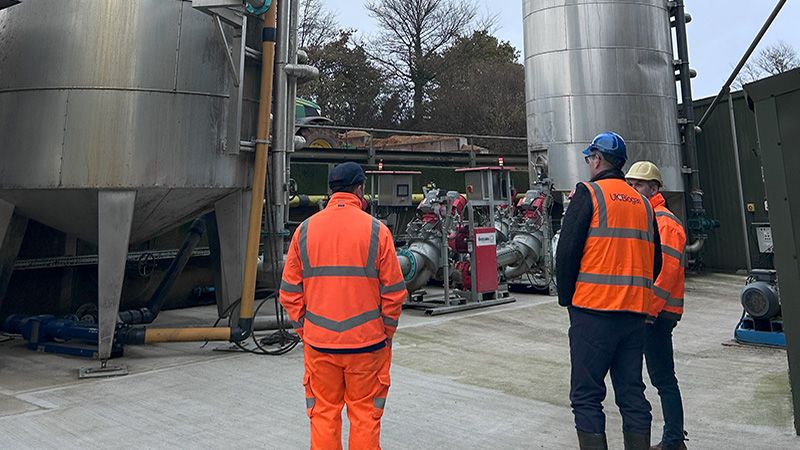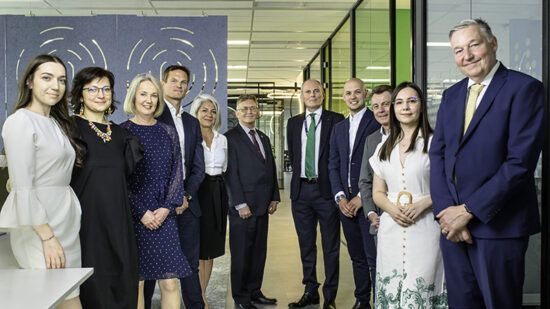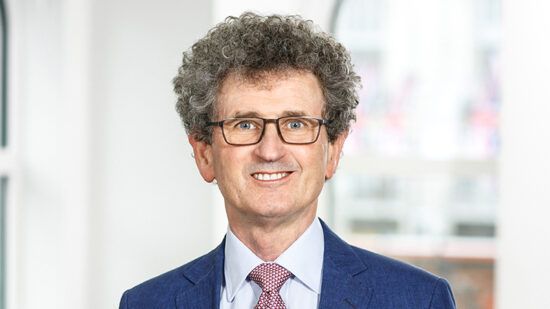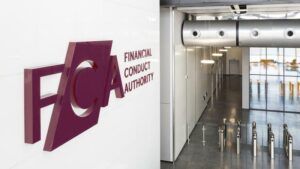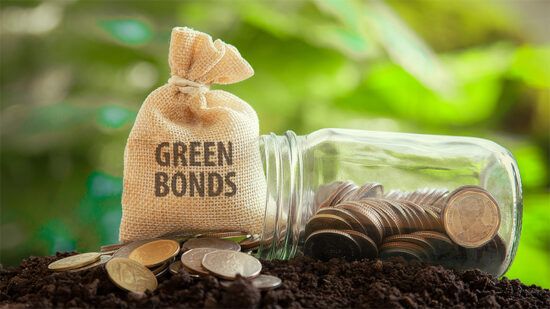For PA Future‘s turn-of-year series New Era, members of the sustainable investment community reflect on last year’s developments and share predictions for the coming year, as well as sharing some eco-friendly Christmas hacks and the one thing they want to see under the tree to accelerate the transition.
Here, Ed Simpson, head of energy and infrastructure at Gravis, discusses looking past short-term ebbs and flows in sentiment, focusing on emerging sectors and a once-in a century opportunity.
What was the most sustainable investment initiative your team undertook in 2024?
We invest directly in assets that will facilitate the path to net zero, so we’re often early movers into areas such as new decarbonisation technologies, projects and facilities. This means we have to work closely with developers to shape the investment proposition, allocate risks accordingly, and bring assets to market that will accelerate decarbonisation and provide returns for investors for many years to come.
One such example is anaerobic digestion plants – of which we now have 19 across the British Isles. These plants enable the decomposition of organic matter to capture the resulting biogas. We’ve worked with the developers on these assets to ensure the contracts for construction and operation are fully optimised; worked with providers of feedstock to make sure it is sustainably grown; and worked with farmers to ensure existing crop rotation strategies are used, and residual nutrients are brought back to the land to improve the quality of the soil for the ongoing production of food and feedstock. AD is a great example of the circular economy.
Were there any unexpected challenges or triumphs in your sustainability journey in 2024?
Not really, not this year. The changing political environment can be a headwind to sentiment, and ESG – as a term at least – has gone out of fashion. But when you are investing for the very long term as we are, you can afford to look past these shorter-term ebbs and flows.
Our assets are minimising carbon emissions, which benefits everyone, maximising the positive benefits for local communities, and producing returns for our investors. They have to be truly sustainable and future-proof. So, I guess the triumph is investing successfully in spite of the short-term challenges.
SDR has been rolled out to the UK funds market. How has this adopted within your business? Has this been a positive development?
Although SDR applies to all FCA-regulated firms making sustainability claims, the use of one of the four sustainability labels is on a voluntary basis. And because it is voluntary, and as the reporting requirements are significant and evolving, we are seeing a number of fund managers opting to wait and see how it develops – including ourselves.
It’s also worth noting that Jersey-based investment companies like GCP Infrastructure Investments, are not captured by the rules at the moment. So not all our funds fall under the remit.
What is incredibly positive though is that the regulation will prevent funds that are not sustainably focused from using certain names and language. So, from that point of view, I think it will reduce greenwashing. It is certainly making asset managers think about how they describe their investments and communicate and report on objectives to investors.
What do you predict will be the biggest trend in sustainable investment in 2025? Are there any emerging sectors or trends you are particularly excited about?
Sustainable investment so far has focused on wind, solar and batteries – areas that facilitate the decarbonisation of energy. At Gravis we’ve always focused more on emerging sectors where we believe investors can achieve better risk-adjusted returns. So, while we have invested in some of these areas in the past, we are now moving away from them into more nascent areas such as anaerobic digestion, as I mentioned earlier.
Other areas I think will start to gain traction in the coming year or so are assets that will help with the decarbonisation of food, transport, and industry. If we are going to get anywhere close to meeting our 2030, 2035 and 2050 decarbonisation targets we are going to have to invest billions in these areas at an extremely fast pace.
We are currently close to making an investment in controlled environment agriculture, for example. We’re looking to support a developer growing lettuce in Ireland in advanced glass houses. This method of agriculture has a number of benefits: the lettuce can be grown all year round with considerably less fertiliser or pesticide use, shelf life increases which in turn reduces wastage, and it reduces the ‘food miles’ as it’s not flown or shipped in from abroad – people can consume locally produced crops grown in a highly sustainable way.
How do you think global events or economic shifts might influence sustainable investing in 2025?
One of the biggest influences at the moment is politics. Our focus is on assets in the UK and Europe, so we should avoid any material impacts from any potential changes to policy in the US.
Closer to home, the picture is more positive. Those wary of the US could refocus on Europe, and our own new government has made a number of commitments to both net zero and infrastructure investment. It’s vital that 2025 is about delivering on the promises that they made in 2024.
In 2025, we’ll see bodies including the National Wealth Fund and GB Energy set up to mobilise third party capital. Once enabling factors like regulatory reform and revenue support models are in place, private investors will have the stability and confidence needed to fuel this infrastructure transformation.
One of Labour’s flagship policies was to bring forward the date at which they plan for the electricity grid to be decarbonised to 2030 from 2035. We only have five years to make good on that – five years to make sure that every bit of electricity we use comes from low carbon sources. And it’s not as simple as just building more wind or solar farms – the biggest challenges are likely to be how we deal with intermittency on the grid and how we interconnect with other markets.
There are other commitments and milestones on the way to being net zero by 2050, particularly in the sectors that are harder to decarbonise such as heat, energy efficiency, transport and industry. As an example, over the last five years 225,000 heat pumps have been installed in the UK. We need 30 million to be installed by 2050. There are one million electric cars on the road today – a figure that needs to rise to 34 million in the next 25 years.
So there has to be a step change. We need more investment and at a rapid pace. UK infrastructure is at a critical juncture, and we need unprecedented investment to replace aging buildings, modernise networks, and meet the decarbonisation goals. It’s a massive, once-in-a-century opportunity to transform our economy and move toward a sustainable future. Some have described it entering an infrastructure super-cycle. Whatever you call it, for investors it means major opportunities in infrastructure assets that should begin in 2025.
What are the top challenges sustainable investment teams will face in 2025, and how will you tackle them?
The first challenge is the overall access to capital – it’s been a hard period in which to raise money, and it takes a long time. While that situation is starting to ease, it could roll over into 2025, especially if interest rates remain higher for longer. The other key challenge for me is the lack of long-term clarity, which undermines investment cases. We need clear plans from the government in order to get things moving. Whilst few of our new investments rely on government incentives or revenue support, it is government policy that sets the mood music, whilst it is ultimately the consumers who want to buy the best products, sustainably supplied, at a competitive price to the legacy way of doing things.
If you could set one new industry standard or regulation in 2025, what would it be?
One of the most effective taxes ever in my view was the Landfill Tax. It has been so effective, it’s changed behaviour. It gave a clear, long-term pathway to industry, creating an investment case for an efficient and exciting recycling industry. If we could have something similar to help decarbonise industry or transport it would be a game-changer.
We need long-term clarity and I’d support new regulation that will clearly support sustainability, and which shows why it is the best long-term solution for everyone. Addressing the vested interests, whilst bringing industry and consumers along together to support the change doesn’t need a big bang, headline grabbing policy. It needs gradual change with a long-term vision that all can understand and support.
What’s your most eco-friendly Christmas hack?
We made homemade Christmas crackers – using recycled materials and filling them with small gifts that are environmentally friendly and useful, instead of bits of plastic that will be immediately thrown away. As my family are so used to my bad Dad jokes, I’ll save them and use them again next Christmas too!
What’s the one thing you’d love to see under the tree to help accelerate sustainability in 2025?
I’d love to see a recognition that sustainability isn’t just about setting environmental targets and reporting, but that it is about doing things better. I don’t really think of sustainability in terms of tonnes of carbon dioxide abated or megawatts of renewable energy generated. Instead, I see products or services being delivered as efficiently and effectively as possible. Anything that uses too much fossil fuel or creates too much waste or pollution is simply going to become a bad investment, as people will use the cheaper, less polluting product anyway.
If I could be greedy, I’d also ask for clarity from the government for both local government pension schemes and the pensions industry more widely, on how they could support sustainable investments. Let’s not wait for the Spring for the 10-year plan – let’s have it now and get on with it!


